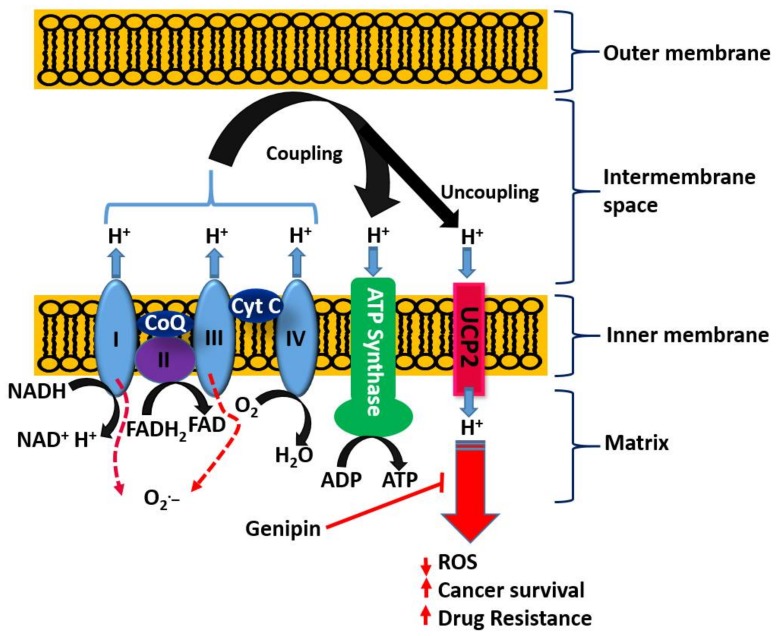Figure 4.
Targeting UCP2 by genipin in cancer. The electron transport chain in the mitochondria comprises complexes I–IV that transfer electrons from NADH through a series of oxidation–reduction reactions. The generation of the (H+) electrochemical gradient by the coordinated action of complexes (I, II, and IV) allows coupling with phosphorylation via ATP synthase. In addition to O2 serving as a final electron acceptor at complex IV, its premature reduction at complexes I and III could lead to O2− formation. UCP2, which is excessively expressed in cancer cells, uncouples the process by creating a (H+) leak and reducing the mitochondrial membrane potential. This mechanism, exploited by cancer cells as a survival factor via reducing ROS generation, is targeted by genipin. CoQ, coenzyme Q and Cyt C, cytochrome C.

